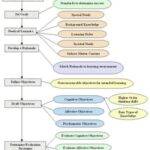One of the primary objectives of an actor within a scene is to connect with his scene partner. This connection must be done through several mediums; however, the two most important mediums is through intent and physical concentration. When you are able to make this connection with the other actor, you will automatically begin giving and receiving energy, which is what makes a scene interesting and invigorating to the audience. A popular topic amongst acting circles is subtext. Subtext is the underlining thought process behind the spoken dialogue; it is the internal dialogue of your character.
Within any acting medium, an actor may give and receive emotional energy through the use of subtext. While this is an advanced-level acting method, it will guarantee a true connection and vibrancy within a performance.
Using Subtext to Give Energy
Most often when an actor learns about subtext it is within the realm of increasing his internal connection with his character. While this is an effective way to further understand the intentions and objectives of your character, you may also use subtext to give energy to your acting partner.
While you are speaking, and especially while you’re listening, you must use your subtext to drive the underlining emotional energy of a scene. For example, you’re braking up with your lover; however, your love does not know that you are being forced to break up with him. While your dialogue is making is “clear” that you no longer wish to be with him, you may use your subtext to showcase your internal struggle with this decision, which may then be received by the other actor.
If properly performed, your subtext will inform the other actor that something is not right. That there is another reason for having to break up besides “wanting some space;” however, you must learn how to use your subtext to increase the energy and true intentions with your acting partner according to the script. While the audience may know that you’re having to break up with your lover due to some other reason, by hinting at this through your subtext, it creates an interesting verbal and non-verbal exchange with your scene partner.




